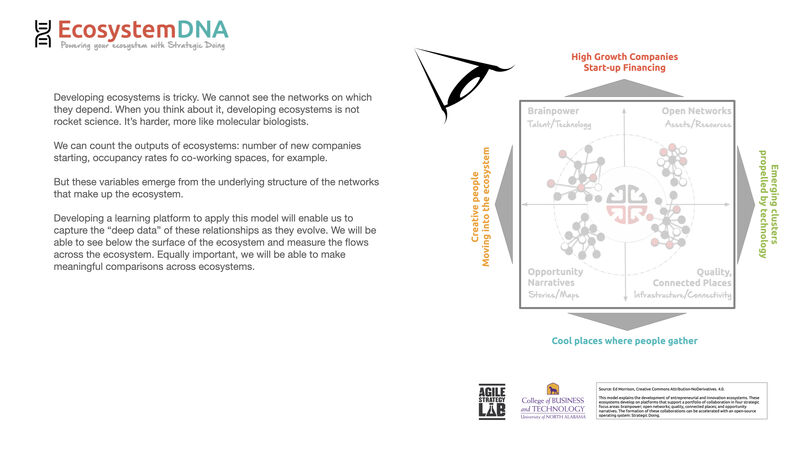The Concept of a Business Ecosystem
A business ecosystem is a familiar idea. In his 1993 Harvard Business Review article, Predators and Prey, James Moore introduced the concept. But here we are, thirty years later, and most leaders struggle with the concept.
Why?
Traditional management concepts do not fit easily into the (still emerging) ecosystem framework. And, until recently, we have yet to be able to teach people how to manage in the context of an ecosystem.
But now we can.
WHY DOES THIS MATTER?
You can only address complex adaptive problems with an ecosystem. By definition, these problems have no set solution. With adaptive problems, there are multiple paths to better outcomes.
But finding these paths requires collaboration — the skills to design and guide a process of recombinant innovation. If you can’t describe this process simply, you don’t understand it.
DIG DEEPER
I started working on this problem in 1993 when Moore’s article appeared. The challenge: how do we transform a regional economy that is mired in an old industrial mindset? More abstractly, how do we create value when nobody can tell anyone else what to do?
It took some time, but I developed a new approach, one based on collaboration and open, loosely joined networks.
A conversation in Singapore in 1992 set me on this path. My lunch guest was a Ph.D. physicist who recently left one of the U.S. national labs. He was the chief technology officer of my client, an early Internet company.
Jonathan set me on the path of studying open-source software development.
Fast forward thirty years. We have validated Strategic Doing through multiple testbeds at Purdue University.
In virtually every one of these testbeds, we developed a new ecosystem.
On Friday, I’ll share 5 critical lessons I have learned. I’ll explain what I have learned in an easily understood and practical format.
If you are interested in ecosystems, join me in our next Strategic Doing Talks. The details are in the comments.
YOUR WALKAWAYS
1. You will walk away with practical insights into ecosystems. What they are, why they work, and how they form.
Business schools don’t teach how to design and guide ecosystems. Scholars — who are deeply interested in the topic — are not much help. (They need to gain more experience developing ecosystems.)
2. You will be able to explain ecosystems and how you can use them to address complex challenges.
Ecosystems survive and thrive by creating new solutions to adaptive challenges. These solutions arise through self-organizing teams that link, leverage, and align resources already embedded in (and accessible through) their networks.
3. You will be able to explain why what we see from vibrant ecosystems emerges from networks we can’t see.
Developing ecosystems is not rocket science. It’s harder—more like molecular biology. But like molecular biologists, we can design and guide networks — new connections — that generate better solutions.


The Founder of the Lab at UNA and co-author of Strategic Doing: 10 Skills for Agile Leadership, Ed’s work has focused on developing new models of strategy specifically designed to accelerate complex collaboration in networks and open innovation. He is the original developer of Strategic Doing.
